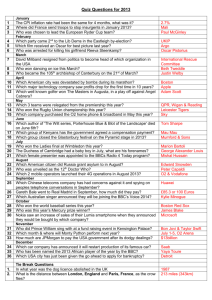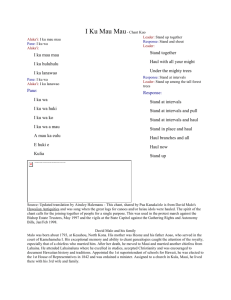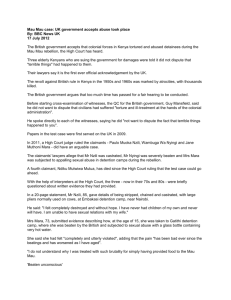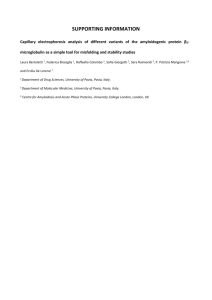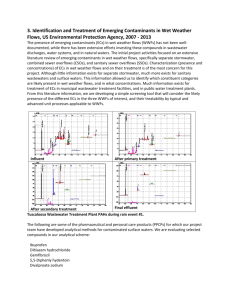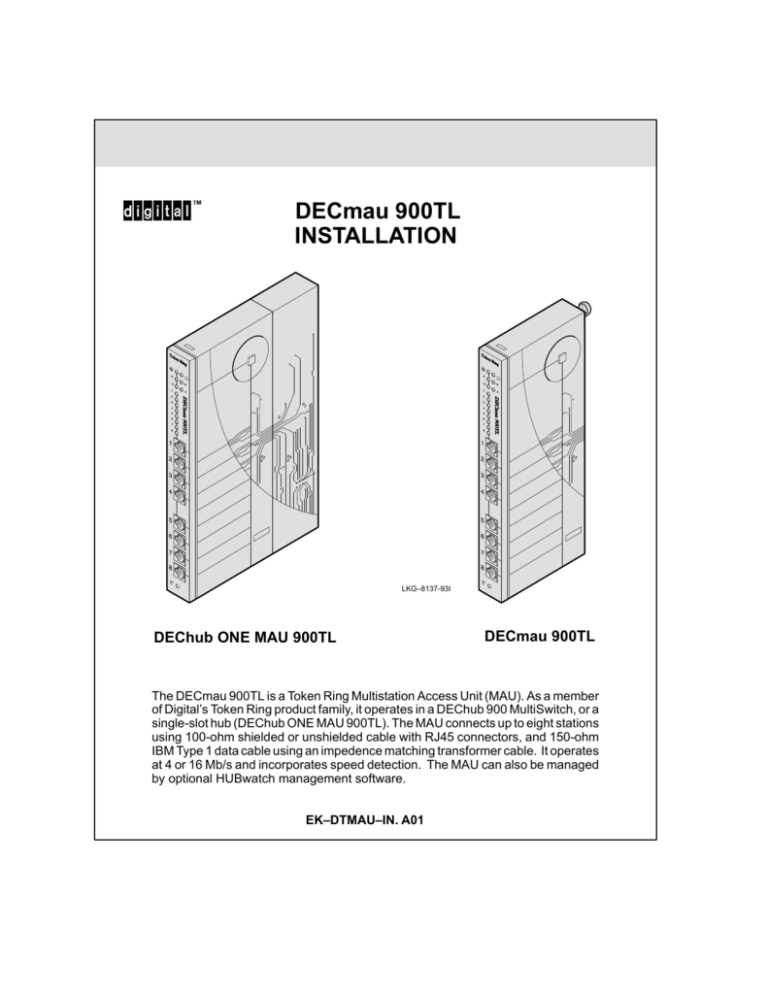
DECmau 900TL
INSTALLATION
LKG–8137-93I
DEChub ONE MAU 900TL
DECmau 900TL
PK–02580–IL
The DECmau 900TL is a Token Ring Multistation Access Unit (MAU). As a member
of Digital’s Token Ring product family, it operates in a DEChub 900 MultiSwitch, or a
single-slot hub (DEChub ONE MAU 900TL). The MAU connects up to eight stations
using 100-ohm shielded or unshielded cable with RJ45 connectors, and 150-ohm
IBM Type 1 data cable using an impedence matching transformer cable. It operates
at 4 or 16 Mb/s and incorporates speed detection. The MAU can also be managed
by optional HUBwatch management software.
EK–DTMAU–IN. A01
Copyright
EK–DTMAU–IN. A01
July, 1993
The information in this document is subject to change without notice and should not be
construed as a commitment by Digital Equipment Corporation. Digital Equipment Corporation assumes no responsibility for any errors that may appear in this document.
Copyright 1993 by Digital Equipment Corporation
All Rights Reserved.
Printed in U.S.A.
The following are trademarks of Digital Equipment Corporation:
DEC, DEChub, DEChub ONE, DECmau, DECrepeater, Digital, the DIGITAL logo,
HUBwatch, and MultiSwitch.
FCC NOTICE – Class A Computing Device:
This equipment generates, uses, and may emit radio frequency energy. The equipment has been
type tested and found to comply with the limits for a Class A computing device pursuant to Subpart
J of Part 15 of FCC Rules, which are designed to provide reasonable protection against such radio
frequency interference when operated in a commercial environment. Operation of this equipment
in a residential area may cause interference; in which case, measures taken to correct the
interference are at the user’s expense.
VCCI NOTICE – Class 1 Computing Device:
This equipment is in the 1st Class category (information equipment to be used in commercial
and/or industrial areas) and conforms to the standards set by the Voluntary Control Council for
Interference by Data Processing Equipment and Electronic Office Machines aimed at preventing
radio interference in commercial and/or industrial areas.
Consequently, when used in a residential area or in an adjacent area thereto, radio interference may
be caused to radios and TV receivers, etc.
Read the instructions for correct handling.
2
DECmau 900TL
Front Panel
1
2
1 ) Power LED. Lights when the MAU has power.
2 ) Module OK LED. Lights when the MAU passes its
self-test. If the MAU fails its self-test, the OK LED is
off.
3
4
3 ) Ring A/B LEDs. In a hub, either the A LED or the B
LED is on to show the ring. In a standalone MAU,
both Ring LEDs are always off.
5
4 ) Speed LEDs. Either the 16 LED or the 4 LED is on
to show the ring speed.
5 ) Eight Lobe LEDs. Lights when a station has access
to the network.
6 ) Eight Lobe Connectors. Connects a station to the
network. The MAU connects up to eight stations with
shielded or unshielded 100-ohm cable, and 150-ohm
IBM Type 1 data cable using an impedence matching
transformer cable (Digital part number BN26T-03).
7 ) Reset Switch. Resets the MAU to factory defaults.
To reset: while turning on the power, press the reset
switch with a pen or screwdriver.
6
Notes:
The DECmau 900TL has speed detect, which
ensures the integrity of the network. At startup, a
MAU determines the ring speed based on the
speed settings of the majority of the stations on the
ring and the Ring Out port. In a hub, the MAU then
connects to the appropriate ring in the hub. After
startup, speed detect prevents stations with the
wrong speed setting from connecting to the network.
PK–02586–IL
7
Network management can override any of the
MAU’s factory default settings.
LKG-8145-93I
DECmau 900TL
3
Rear Panel of DEChub ONE MAU 900TL
Note:
The rear panel shown here is used only when the MAU
is in a single-slot hub configuration.
1
1 ) Ring In LED. Lights with a Ring In connection.
2
2 ) Ring Out LED. Lights with a Ring Out connection.
3
3) Power Connector. Provides power connection for the
MAU.
4 ) Ring In Connector. Connects Ring In to the Ring
Out connector of a MAU or repeater.
4
5
6
7
8
5 ) Ring In Autowrap Switch. Determines whether the
MAU automatically loops back when it detects a
disconnected link on Ring In. If the Ring In port
connects to a device with Digital’s Autowrap, set the
switch to 1 to enable Autowrap. If the Ring In port
connects to a device without Digital’s Autowrap, set
the switch to 0 to disable Autowrap.
6 ) Ring Out Connector. Connects Ring Out to the Ring
In connector of a MAU or repeater.
7 ) Ring Out Autowrap Switch. Determines whether the
MAU automatically loops back when it detects a
disconnected link on Ring Out. If the Ring Out port
connects to a device with Digital’s Autowrap, set the
switch to 1 to enable Autowrap. If the Ring Out port
connects to a device without Digital’s Autowrap, set
the switch to 0 to disable Autowrap.
8 ) Not used. Reserved for out-of-band network
management.
LKG-8146-93I
4
DECmau 900TL
Installing a MAU in a DEChub 900 MultiSwitch
When you install a MAU in a DEChub 900 MultiSwitch, you do not have to turn off the hub power.
Remove the single-slot hub (if necessary).
If you want to install a DEChub ONE MAU 900TL in a hub,
you need to remove the single-slot hub.
a. Loosen the screw on the single-slot
hub until it disengages.
b. With one hand holding the front of
the MAU, and your other hand
holding the single-slot hub,
carefully pull the two units apart.
a. Align the MAU’s 48-pin connector
with any available 48-pin slot on the
hub.
Install the MAU in the hub.
The release lever is
lifted and clicks
back into place
as the module
is seated.
b. Place the MAU’s bottom mounting
tab into the mounting slot on the hub.
c. Rock the MAU into place. You hear a
‘‘click” when the MAU is seated.
Mounting
tab
DECmau 900TL
LKG–8139-93I
5
Installing a MAU in a DEChub 900 MultiSwitch (continued)
Verify power.
With power on in the hub, verify that the
Power and Module OK LEDs are on.
LKG–8141-93I
Connect station cables.
Connect station cables to any
available lobe connector on the
MAU. For 150-ohm applications,
you also need an impedence
matching transformer cable
(Digital part number BN26T-03).
PK–02570–IL
LKG–8140-93I
6
DECmau 900TL
Installing a DEChub ONE MAU 900TL
Mount MAU (optional).
You can place the MAU on a table, mount it on a wall, or mount it in a standard 19-inch rack
using a shelf assembly, Digital part number H9544-MS.
For a wall mounting, position two screws 19.7 centimeters (7.75 inches) apart on the wall. Turn
screws until tight and then back off two turns. Hang the MAU using the keyholes.
Set Autowrap switches.
a. Set the Ring In and the Ring Out Autowrap
switches to 1 or 0.
b. Set the switch to 1 to enable Autowrap
when the Ring In or Ring Out port
connects to a device with Digital’s Auto
wrap, there is only one MAU in the
network, or the port is not connected to
the network. Otherwise, set the switch to
0 to disable Autowrap.
To
power
supply
Connect power supply.
LKG–8142-93I
a. Connect the power supply cable to
the power connector.
b. Plug the power supply into a wall
outlet.
DECmau 900TL
7
Installing a DEChub ONE MAU 900TL (continued)
Connect station cables.
Connect station cables to any available
lobe connector on the MAU. For
150-ohm applications, you also need an
impedence matching transformer cable
(Digital part number BN26T-03).
Install a MAU to adjacent MAUs or repeaters.
If a MAU is being added to an existing
network, connect Ring In
to the Ring
Out connector of a MAU or repeater, and
connect Ring Out
to the Ring In
connector of a MAU or repeater.
Check LEDs.
With power on, verify that the Power and
Module OK LEDs are on.
LKG–8143-93I
8
DECmau 900TL
Removing a MAU from a DEChub 900 MultiSwitch
Disconnect the station connector cables from the MAU.
Remove the MAU from the hub.
Note:
When you remove a MAU from the
hub, do not turn off the hub power.
The release lever is
lifted and clicks
back into place
as the module
is removed.
a. Lift up the Release lever on the
hub.
b. Pivot the MAU back on its
bottom mounting tab until it
disengages from the hub.
Mounting
tab
LKG–8144-93I
DECmau 900TL
9
LED Summary
The LEDs indicate status by being on, off, and flashing. Flashing LEDs indicate special situations.
There are two flashing patterns and a scroll pattern. When an LED indicates a continuous single-flash
pattern, network management has disabled the port. A continuous double-flash pattern indicates the
wrong speed. In a scroll pattern, the LEDs turn on and off in a set order.
LED1
Off
On
Power
No Power
Power OK
Flashing
Module OK Self-test failed
or not operating
Self-test OK
4/16 Mb/s
No activity
Valid speed or
management set
speed
Lobe
Inactive
Connected to network
Continuous single flash: network
management disabled port.
Continuous double flash: wrong speed.
Connected to Ring A
or Ring B
Continuous single flash: network
management disabled port.
A and B alternately flash: MAU needs an
upgrade or an upgrade is in progress.
Connected to network
Continuous single flash: network
management disabled port.
Continuous double flash: wrong speed.
Hub MAU ONLY:
Ring A/B
Not connected
DEChub ONE ONLY:
Ring In/
Ring Out
1
10
Scroll:
Inactive or
wire fault
During power-up self-tests, all LEDs, except the Power LED, indicate a scrolling
pattern.
DECmau 900TL
Cabling
Table 1 lists the Token Ring industry guideline for the maximum lobe length of shielded twisted-pair
(STP) and unshielded twisted-pair (UTP) cable.
Table 1 Industry Lobe Length Guideline
UTP
STP
Speed
Level 3
Level 5
4 Mb/s
100 m (327 ft)
100 m (327 ft)
100 m (327 ft)
16 Mb/s
65 m (213 ft)
100 m (327 ft)
100 m (327 ft)
Lobe lengths for Digital’s MAUs exceed the industry guideline. Specifically, lobe lengths can be longer
than the industry guideline for STP cable and UTP level 5 cable at 4 Mb/s. See Table 2, Digital Lobe
Length Guideline, for the maximum lobe lengths for Digital’s MAUs. Also refer to either “DEChub 900
MultiSwitch Configuration or DEChub ONE Configurations” below for more configuration information.
Table 2 Digital Lobe Length Guideline1
UTP
STP
Speed
Level 3
Level 5
4 Mb/s
100 m (327 ft)
200 m (655 ft)
376 m (1235 ft)
16 Mb/s
65 m (213 ft)
100 m (327 ft)
173 m (569 ft)
1 All
distances include patch cables and hub connections.
Digital recommends that you keep lobe lengths within the maximums found in the industry guideline
whenever possible. This allows for future network expansion and upgrade. When current needs
dictate the longer lobe lengths, you can increase lobe lengths up to the maximums in Digital’s guideline
without any negative effect on the network.
DEChub 900 MultiSwitch Configuration
Multiple Hubs
A repeater is needed in each hub to connect hubs in a multiple hub network. Refer to the
appropriate Token Ring repeater manual for specific information.
DEChub ONE Configurations
Unshielded Twisted-Pair Cable Configurations:
Multiple MAUs in One Wiring Closet at 16 Mb/s
At 16 Mb/s, a maximum of five MAUs can be in one wiring closet without affecting maximum lobe
length. Subtract 10 meters from the lobe lengths in Table 2 for each additional MAU above five in a
wiring closet.
Multiple Wiring Closets
Digital recommends that you use repeaters to segment the ring in a network with multiple wiring
closets. In some situations, only one, or no repeaters, are required. Refer to the appropriate
Token Ring repeater manual for specific information.
DECmau 900TL
11
Cabling (continued)
Digital recommends that you use repeaters to segment the ring in a network with multiple wiring
closets. In some situations, only one, or no repeaters, are required. Refer to the appropriate Token
Ring repeater manual for specific information.
When distances exceed the lobe lengths in Table 2, or if the MAU does not have Digital’s Autowrap
functionality, two repeaters are required.
When a MAU has Autowrap enabled, only one repeater is required per wiring closet if the distance
between the wiring closets does not exceed the distances shown in Table 2.
With UTP level 5 cable at 4 Mb/s, no repeaters are required with multiple wiring closets if the total cable
budget is within the distances shown in Table 3.
For UTP level 3 cable at 4 Mb/s, divide all distances in Table 3 by 1.3.
Table 3 Total Cable Budget for UTP Level 5 Cable at 4 Mb/s1
MAUs
0
Wiring Closets
2
3
1
4
5
6
1
210 m (689 ft)
206 m (675 ft)
2
192 m (630 ft)
189 m (620 ft)
185 m (607 ft)
3
175 m (574 ft)
171 m (561 ft)
168 m (551 ft)
164 m (538 ft)
4
157 m (515 ft)
154 m (505 ft)
150 m (492 ft)
147 m (482 ft) 143 m (469 ft)
5
140 m (459 ft)
136 m (446 ft)
133 m (436 ft)
129 m (423 ft) 126 m (413 ft)
122 m (400 ft)
6
122 m (400 ft)
119 m (390 ft)
115. m (377 ft)
112 m (367 ft)
105 m (344 ft)
1 All
108 m (354 ft)
101 m (331 ft)
distances include patch cables.
Total cable budget = maximum lobe length + adjusted ring length
Adjusted ring length = total trunk length – shortest trunk length
Shielded Twisted-Pair Cable Configuration:
Digital supports industry standards for shielded twisted-pair (STP) cable. Refer to the IBM Token Ring
Network Introduction and Planning Guide for specific information on STP cable.
Cable Connector Specifications
Table 4 lists the signal names of each pin associated with the Ring In, Ring Out, and Lobe connectors.
The shaded area in the table indicates signals used only by Token Ring.
Table 4 MAU Connector Signal Names
Connector
Name
1
2
3
Pins
4
5
6
7
8
Ring In
RS422 RX+ RS422 RX– Transmit–
Receive+
Receive–
Transmit+
RS422 TX–
RS422 TX+
Ring Out
not used
not used
Receive–
Transmit+
Transmit–
Receive+
not used
not used
Lobe
not used
not used
Receive–
Transmit+
Transmit–
Receive+
not used
12
not used
DECmau 900TL
Problem Solving
If ...
Then ...
Do This ...
DEChub 900 MultiSwitch and DEChub ONE
Power LED is off.
MAU does not have power.
Verify that outlet has power.
Check power connection to MAU.
Replace power supply.
Replace MAU.
Module OK LED is off.
MAU failed self-test.
Replace MAU.
Ring A and B LEDs alternately MAU needs an upgrade
flash.
or an upgrade is in progress.
If you have network management,
do a downline load;
otherwise, replace MAU.
Wait for upgrade to complete.
Both Speed LEDs are off.
No activity is on the network.
Start up at least one station.
Lobe LED is off after station
completes self-test
Station cannot access
network.
Check lobe cabling for crossover
between transmit and receive
wires. All cables, including patch
cables, must be straight through.
Lobe LED indicates a
continuous single flash
pattern.
Network management
disconnected station from the
network.
To change setting, you can use
network management commands
or the MAU’s Reset switch.
Lobe LED indicates a
continuous double flash
pattern.
MAU and station have different Change the speed setting of the
speed settings.
station.
DECmau 900TL
13
Problem Solving (continued)
If ...
Then ...
Do This ...
DEChub 900 MultiSwitch ONLY
Lobe, Ring In, Ring Out,
Ring A/B LEDs flash together.
Network management has
disabled MAU.
To change settings, you can use
network management commands
or the MAU’s Reset switch.
MAU does not connect to
hub.
Network management will not
connect MAU to hub.
Check speed and hub
settings for incorrect network
management overrides.
MAU does not work
in DEChub 90.
DEChub 90 only supports
Ethernet networks.
A DEChub 900 MultiSwitch
supports Token Ring networks.
DEChub ONE ONLY
Ring In or Ring Out LED
indicates a continuous
single flash pattern.
Network management
disconnected the MAU’s
RI or RO port.
To change setting, you can use
network management commands
or the MAU’s Reset switch.
Ring In or Ring Out LED
indicates a continuous
double flash pattern.
MAU and ring have different
speed settings.
Change the speed setting of the
stations or the ring.
Lobe, Ring In and Ring Out
LEDs flash together.
Network management has
disabled MAU.
To change settings, you can use
network management commands
or the MAU’s Reset switch.
Vendor’s MAU or repeater
causes loopback on ring.
Vendor’s unit is incompatible
with Digital’s Autowrap.
Set Autowrap switches on the
DECmau or DECrepeater adjacent
to the vendor’s unit to 0.
Network crashes when a MAU Vendor’s unit does not have
or repeater fails.
Digital’s Autowrap.
14
Set Autowrap switches on the
DECmau or DECrepeater adjacent
to the failed unit to 1.
DECmau 900TL
Product Specifications
Product Specification
In a Hub
DEChub ONE
Size
27.3 x 11.2 x 3.2 cm
(10.8 x 4.4 x 1.2 inches)
27.3 x 17.0 x 3.2 cm
(10.75 x 6.7 x 1.25 inches)
Weight
.82kg (1.5 lb)
1.09kg (2.0 lb)
Operating temperature
5° C to 50° C (41° F to 122° F)
5° C to 50° C (41° F to 122° F)
Relative humidity
10% to 95% non-condensing
10% to 95% non-condensing
Altitude
Sea level to 4800 m (16,000 ft)
Sea level to 4800 m (16,000 ft)
Power Supply
Hub provides
Provided by:
H7082–AB
Input Power
1.0 A @ +5.1 Vdc
1.0 A @ +5.1 Vdc
Connectors
RJ-45
RJ-45
Agency certification
UL, TÜV, CSA, FCC, VDE
UL, TÜV, CSA, FCC, VDE
Acoustics: Preliminary
declared values per ISO
9296 and ISO 7779
No acoustic noise
No acoustic noise
Schallemissionswerte:
Vorläuge Werteangaben
nach ISO 9296 und ISO
7779/DIN EN27779
keine meßbaren Schallemissionen
keine meßbaren Schallemissionen
Associated Document
DEChub 900 MultiSwitch
Owner’s Manual
DECmau 900TL
This manual provides overview, installation, and problemsolving information for the DEChub 900 MultiSwitch.
15

